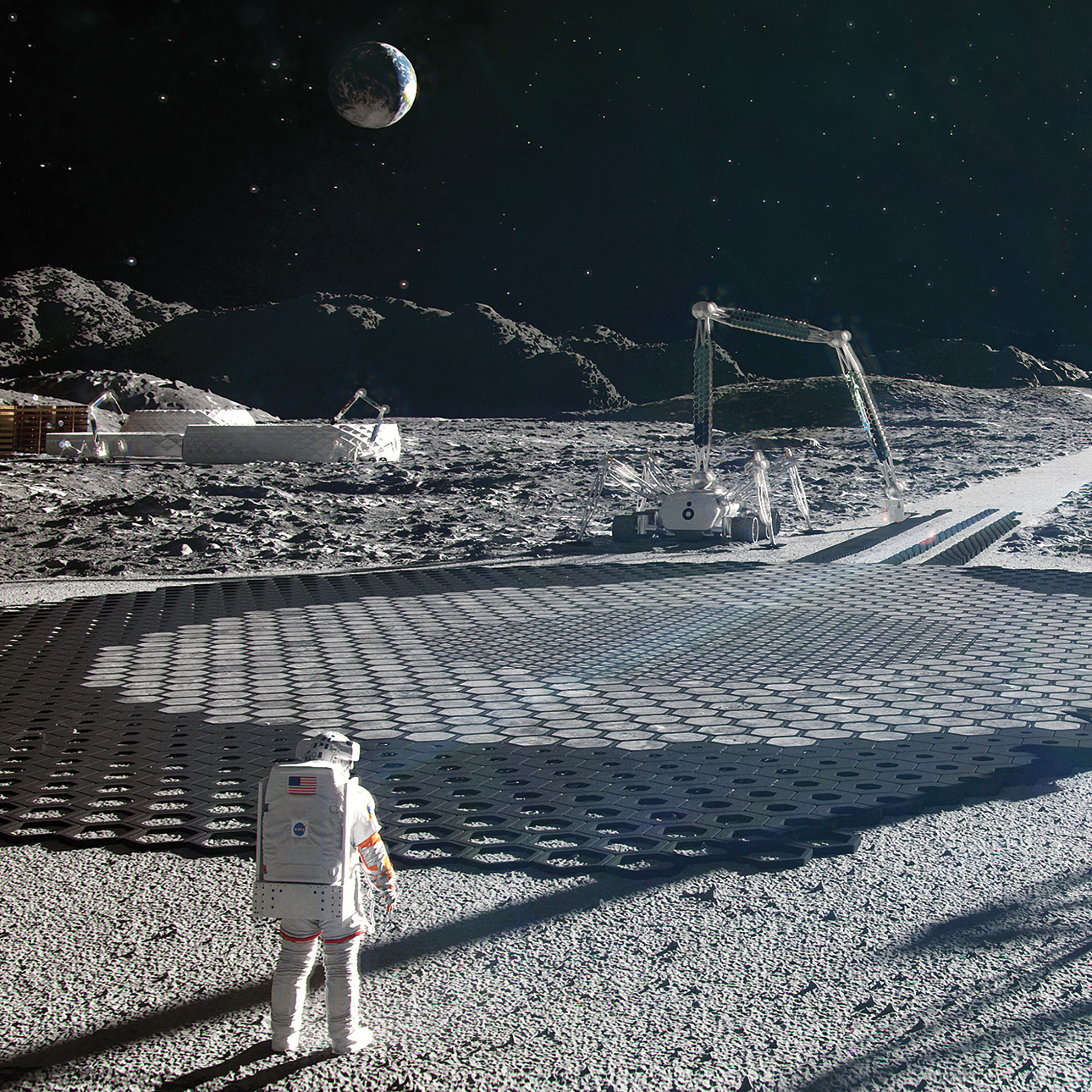Through the Artemis program, NASA plans to build a permanent base on the moon. And the first step in developing a lunar outpost is creating a reliable landing pad.
Without the landing pad, every time a lunar lander touches down, it will kick up dust that could gum up equipment and damage the surrounding habitat.
“Each particle of [moon] dust is jagged and angular,” says Katie Koube ’14, a materials scientist at robotics and AI company ICON Technology Inc. “So, if a rocket lands directly on the moon’s surface, it stirs up dust that sandblasts the whole area.”
In 2022 NASA selected ICON for a $57.2 million grant to develop lunar construction technology. Because the cost of bringing traditional building materials from Earth is incredibly high, ICON is exploring the feasibility of 3D-printing a lunar outpost using the moon’s resources. (ICON already uses such technology to build homes on Earth.)
Using a 3D printer, ICON plans to scoop up the moon’s soil, melt it down and then cool it to form ceramic material that could be used to build structures. But before that can happen, the team first needs to understand the soil’s exact composition, which can vary drastically from one sample to the next.
That variability poses a unique challenge, says Northwestern mineralogist Steven Jacobsen, because “different minerals in lunar dirt melt at different rates, [and] the 3D-printing process is very sensitive to changes in mineralogy.”
Jacobsen, a professor of Earth and planetary sciences, has received funding from NASA’s Marshall Space Flight Center to help unravel the mystery of this destructive, varied moon dust. Jacobsen is a faculty affiliate with the Paula M. Trienens Institute for Sustainability and Energy and the Center for Engineering Sustainability and Resilience.
“Off-world construction comes with many challenges,” he says. “On the moon, soil is formed from meteoroid impacts that have crushed the surface. So, the moon is essentially coated in a thick layer of pulverized flour. The types of minerals and glass found in lunar soil … can vary widely within a small area.”

Katie Koube, left, and Steven Jacobsen. Photo Credit: Shane Collins
As the project’s principal investigator, Jacobsen is working closely with Koube, his former student, to analyze various samples of simulated moon dust using Northwestern’s facilities. Their goal is to create a library of potential soil sample compositions. Laura Gardner and Tirzah Abbott, doctoral students in Jacobsen’s lab, are using microscopy techniques to analyze eight lunar simulants designed to mimic the real thing. (Real moon soil is in limited supply.) They will also analyze synthetic plagioclase, a mineral that is a major constituent of moon rock. Then, the team will compare the lunar simulants to actual samples collected from the Apollo missions.
The researchers will study how the soil composition can affect the melting process used in 3D printing. Because no two scoops of lunar soil are the same, the 3D-printing technology needs to be nimble enough to handle subtle differences. Equipping the 3D printer with a library of all potential soil compositions will allow it to perform autonomous diagnostics of each scoop and then adjust its laser parameters for heating and cooling.
That way, says Jacobsen, “the printer will know how to process each scoop of moon soil to produce the best ceramic. That detailed library will play a part in making the imagined outpost a reality.”




Reader Responses
No one has commented on this page yet.
Submit a Response